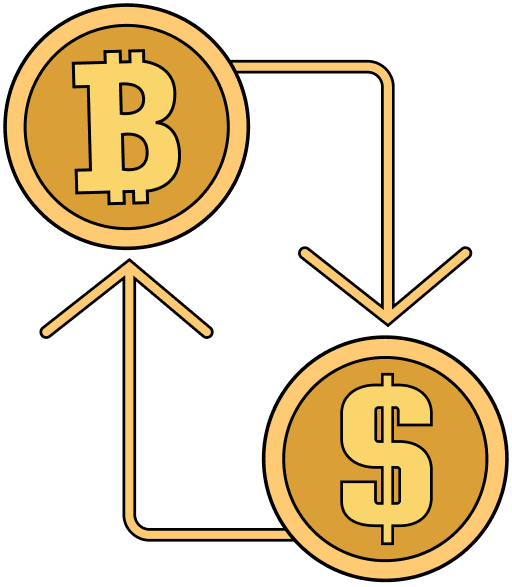Coinone: A Leader in Cryptocurrency Exchanges in South Korea
Coinone is one of South Korea’s most seasoned and well-known cryptocurrency exchanges, having weathered the unpredictable and frequently volatile waters of the digital asset market from its founding to the current day. With its strong focus on security, extensive range of services beyond mere trading, and its status as an industry leader within the Korean crypto ecosystem, Coinone has established itself as an institution to which individuals and institutions turn to participate in crypto trading. Its story is one of cryptocurrency adoption and regulation in one of the world’s most active crypto marketplaces.
The Genesis of Coinone: Meeting an Emerging Need
Coinone was established by Myunghun Cha in 2014, just as cryptocurrency, and especially Bitcoin, was starting to gain significant international attention. With its technological culture and widespread internet use, it is no surprise that South Korea became one of the leading cryptocurrency hotspots in no time. The Coinone creators understood that there was an increasing need for an accessible, secure, and user-friendly platform that could be tailored to serve the Korean market, integrating smoothly into the local monetary unit, the Korean Won (KRW).
Since its foundation, Coinone strived to stand out by putting security and regulation at the forefront, something that would become even more significant as the crypto ecosystem evolved. Coinone was determined to create an environment where users felt secure and comfortable, something that, in an industry as excited as it was cautious about crypto’s risks, was critical to its success.
The launch offerings were quite small, with only Bitcoin as the main asset. But as the ecosystem of cryptocurrency grew, Coinone’s listings grew as well, eventually adding other prominent cryptocurrencies, and, lastly, more of them as alts. This growth was fueled by customer requests and Coinone’s desire to be an all-encompassing entry portal to the digital asset universe for their Korean user base.
Negotiating the Regulatory Labyrinth: Coinone’s Regulatory Compliance
Operating within South Korea as a cryptocurrency exchange is fraught with its own set of regulation-specific issues and expectations. The government of South Korea has taken great interest in the crypto sector, introducing an array of measures to protect investors, counter money laundering (AML) as well as know-your-customer (KYC) requirements. Coinone has remained committed to operating within these regulation schemes, tending to be proactive in implementing new necessities in many instances.
This constitutes strong KYC processes for registration and identification of users. Mentioned in the earlier article, registering for Coinone has multiple stages, ranging from submitting standard contact information to uploading copies of identification papers and, in certain instances, even taking a selfie with an attached passport copy. For corporate users, even more stringent requirements include presenting company registration papers and statements declaring why the user is using the services of the exchange. All these steps serve to avoid any illicit conducts and to keep transactions transparent.
The multiple-tiered account structure, where different levels of access correlate to the level of verification, is another indication of this compliance-centered strategy. Though even the highest tiers of access, which allow for the complete set of services, have in the past been more accessible to residents or nationals of South Korea, this speaks to the exchange’s following of domestic law. Coinone’s attempts to obtain required licenses and agreements with more conventional financial institutions, like banks, in order to achieve real-name account verification, have been similarly important for its ongoing operation and development in Korea.
Security at its Core: Securing User Assets
One of Coinone’s strongest marketing points is its unrelenting dedication to safety. Within an industry beset by high-profile exchange hacks, having a robust security posture is of utmost importance. Coinone has made considerable investments in security protocols designed to safeguard user deposits and information. Such measures include ubiquitous use of two-factor authentication (2FA) for user accounts, further ensuring that accounts remain secure from malicious intrusion.
One of Coinone’s most important strategies is that it keeps the overwhelming majority of user funds in “cold wallets.” Cold wallets refer to storage systems that remain offline, which renders them unreachable to hackers who could be looking to break into the exchange’s online systems. A small fraction of funds, used for enabling everyday withdrawals, is left in hot wallets (wallets that remain online). This method greatly reduces the possibility of devastating losses in case of an attack on its systems.
Also, Coinone utilizes ongoing security scanning, routine audits, and works with cybersecurity companies to detect and repair possible vulnerabilities. The fact that the platform, as stated in the older article, has an excellent history of not being victimized by successful large-scale hacks is an indication of the success of these practices. This dedication to security has played an important role in establishing trust within its user community.
Beyond Basic Trading: Coinone’s Diversified Service Portfolio
Where spot trading of cryptocurrency against the South Korean Won is its mainstay, Coinone has also added capabilities to serve more advanced user sophistication and needs. The platform has long provided support for margin trading, whereby users can trade using leverage. With up to 1:4 leverage, as mentioned above, traders were able to leverage their potential gains (and losses) by borrowing money. Remarkably, borrowed money frequently came from other platform users, presenting an opportunity for some to receive passive returns on their holdings by lending them out.
Coinone has further expanded into more advanced financial products and services involving digital assets. This has seen it delve into derivatives, staking services (enabling users to gain rewards from keeping specific cryptocurrencies), and other forms of investing. The intent has been to establish an extensive financial ecosystem based on digital assets that extends beyond mere buying and selling transactions.
The launch of “Coinone Blocks,” an offline customer support center and crypto ATM network, was especially pioneering. This offline presence enabled Coinone to provide in-person support, educate users, and establish an additional avenue of accessing and controlling digital assets. Such measures serve to illustrate dedication to closing the offline-online integration gap and bringing crypto to more of an audience.
Trading Experience and Platform Features
The trading experience on Coinone is driven mostly by its online trading terminal. The platform generally provides basic trading instruments, such as real-time charts, order books, multiple order types (market, limit, stop-limit), and trading history. The platform is relatively user-friendly, suitable for both beginner traders and more sophisticated market participants.
Coinone also has mobile apps for both iOS and Android, which let users trade, manage accounts, and track market trends on mobile. In a mobile-first market such as South Korea, any successful exchange depends on having a strong and accessible mobile app. These apps typically duplicate the functionality of the web platform, adapted for smaller screens.
The number of tradeable coins on Coinone has expanded over time. Although it started by only trading in Bitcoin, today, it supports a wide variety of well-known cryptocurrencies and altcoins, which it largely trades for and against KRW. The process of considering additions to be supported is normally based on evaluating the project’s team, tech, community, as well as regulatory clearance. This curated method is meant to provide users with legitimate and quality digital currencies to trade.
Charges, Thresholds, and Marketplace Status
Coinone has traditionally adopted a competitive fee schedule. The trading fees tend to be as a fraction of transaction value, which is often tiered, i.e., reducing as users trade higher volumes. The average fee of transactions has been about 0.1% as discussed, but market maker fees were even smaller. The fees on deposits, particularly for KRW, were frequently negligible or absent, promoting users to top up accounts.
Limitations on withdrawal exist, not to avoid paying interest, but predominantly for reasons of security and regulatory requirements. The above-stated daily withdrawal limit (approximately 100 million KRW) and the transaction limit (approximately 20 million KRW) may vary according to levels of account verification as well as current regulation. Such restrictions are well within norms for exchanges to regulate risk and adhere to AML measures.
Coinone has remained one of the leading South Korean cryptocurrency exchanges in terms of trading volumes, while competitors include such players as Bithumb, Upbit, and Korbit. The “Big Four” of these players traditionally reign supreme in Korea. Coinone’s volumes, although subject to market trends, regularly achieve large numbers, suggesting an active and large user base. Its established brand name and respect in Korea’s crypto community explain why it remains anchored in the market over time.
Challenges Facing Coinone
Similar to every cryptocurrency exchange, Coinone exists in an environment that is both difficult and increasingly volatile. The Korean regulatory environment is still evolving and demands that exchanges be continually adjusting to remain in compliance with updated rules and practices. Competition from domestic as well as international exchanges is also aggressive, prompting platforms to innovate and provide higher-quality services and reduced fees.
Security is a continuing issue for the industry as a whole. Coinone’s sound past notwithstanding, the risk of advanced cyber attacks is always there, necessitating ongoing investment in security systems and caution. Volatility is also an underlying issue, as cryptocurrency prices can swing wildly, affecting trading volumes and user attitudes.
Moving forward, Coinone’s fortunes in the future would be based on its capacity to keep innovating, continue to be secure, keep abreast of an evolving regulatory landscape, and broaden its product offerings to respond to evolving users’ needs. This might include further investigation of integrations into DeFi, marketplaces of NFT, or other emerging components of the larger Web3 universe. Its experience of working in Korea and its strong brand build-up lay strong groundwork for it to build upon in the future.
Conclusion
Coinone has established itself as a pillar of cryptocurrency exchange in South Korea. With its unwavering dedication to security, real-time engagement in regulation, and expanding set of features beyond trading, it has won the confidence of many users. From its origins as an upstart Bitcoin exchange to an end-to-end financial platform, Coinone’s development as an institution is testament to its resilience and flexibility as it stands as anchor institution for anyone wishing to engage in the rich crypto environment of South Korea.












 Twitter
Twitter
 Telegram
Telegram
